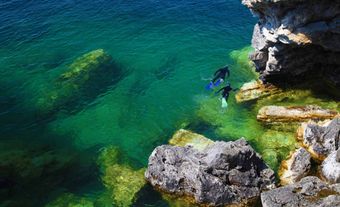
-
- MLA 8TH EDITION
- Zoltai, S.C.. "Melville Island". The Canadian Encyclopedia, 04 March 2015, Historica Canada. www.thecanadianencyclopedia.ca/en/article/melville-island. Accessed 19 April 2024.
- Copy
-
- APA 6TH EDITION
- Zoltai, S. (2015). Melville Island. In The Canadian Encyclopedia. Retrieved from https://www.thecanadianencyclopedia.ca/en/article/melville-island
- Copy
-
- CHICAGO 17TH EDITION
- Zoltai, S.C.. "Melville Island." The Canadian Encyclopedia. Historica Canada. Article published February 07, 2006; Last Edited March 04, 2015.
- Copy
-
- TURABIAN 8TH EDITION
- The Canadian Encyclopedia, s.v. "Melville Island," by S.C. Zoltai, Accessed April 19, 2024, https://www.thecanadianencyclopedia.ca/en/article/melville-island
- Copy
Thank you for your submission
Our team will be reviewing your submission
and get back to you with any further questions.
Thanks for contributing to The Canadian Encyclopedia.
CloseArticle
Melville Island
Article by S.C. Zoltai
Published Online February 7, 2006
Last Edited March 4, 2015


 Share on Facebook
Share on Facebook Share on X
Share on X Share by Email
Share by Email Share on Google Classroom
Share on Google Classroom

